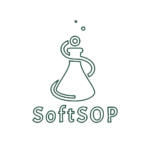Standard Operating Procedure (SOP)
Title: Creation of ATP-RTE Graphs for Upper Management Review
Document Number: SSOP-ATP-001
Effective Date: 08/21/2025
Revision Number: 01
Approved By: “Your Name Here”
1. Purpose
The purpose of this SOP is to establish a standardized method for generating and presenting ATP (Adenosine Triphosphate) swab results for Ready-to-Eat (RTE) product contact surfaces in graphical form. These graphs serve as a visual tool for upper management to assess sanitation effectiveness, identify trends, and support continuous improvement initiatives in compliance with FDA (21 CFR Part 117), USDA-FSIS regulations, and ISO 22000 food safety management system requirements.
2. Scope
This procedure applies to all sanitation personnel, Quality Assurance (QA/QC), and Food Safety Teams responsible for verifying RTE sanitation effectiveness using ATP swabs across all production facilities.
3. Responsibilities
- Sanitation Manager: Ensures accurate ATP data collection, oversees compliance with this SOP, and reviews results prior to management reporting.
- QA/QC Department: Verifies ATP swab test results, maintains documentation, and prepares data for graphing.
- Data Analyst / Designated Staff: Compiles data, generates graphs, and presents reports to management.
- Upper Management: Reviews ATP-RTE performance, provides feedback, and authorizes corrective actions when trends indicate risk.
4. References
- 21 CFR Part 117 – Current Good Manufacturing Practice, Hazard Analysis, and Risk-Based Preventive Controls for Human Food.
- 9 CFR Part 416 – USDA Sanitation Performance Standards.
- ISO 22000:2018 – Food Safety Management Systems.
- ISO 9001:2015 – Quality Management Systems.
- Company Master Sanitation Schedule and Environmental Monitoring Program (EMP).
5. Definitions
- ATP (Adenosine Triphosphate): A molecule found in living cells used as a rapid indicator of organic residue.
- RTE (Ready-to-Eat): Food products that require no further cooking prior to consumption.
- RLU (Relative Light Unit): Measurement output from ATP swab tests indicating surface cleanliness.
- ATP-RTE Graph: A visual representation (line chart, bar chart, or trend analysis) of ATP results on RTE contact surfaces.
6. Procedure
6.1 Data Collection
- Conduct ATP swabbing per SSOP ATP Swab Collection Procedure (SSOP-ATP-005).
- Record results in the Sanitation Verification Log with the following information:
- Date & Time
- Facility & Line Number
- Surface/Equipment ID
- ATP RLU Reading
- Pass/Fail Status (per pre-established thresholds)
- Submit results to QA/QC for verification within 24 hours.
6.2 Data Entry
- Enter ATP results into the Sanitation Data Tracking Spreadsheet (Excel/Google Sheets).
- Verify all entries for accuracy against original logs.
- Categorize results as Pass, Marginal, or Fail based on facility threshold values (e.g., Pass ≤ 150 RLU, Marginal 151–300 RLU, Fail > 300 RLU).
6.3 Graph Creation
- Use Microsoft Excel, Google Sheets, or approved data visualization software (e.g., Power BI, Tableau).
- Generate graphs by:
- Selecting the time period (daily, weekly, or monthly).
- Filtering by facility, production line, or surface type.
- Plotting RLU results against thresholds for trend analysis.
- Recommended Graph Types:
- Line Graphs: Show ATP pass/fail trends over time.
- Bar Graphs: Compare departments, shifts, or facilities.
- Pie Charts: Display % of passes vs. fails per week/month.
- Highlight critical control failures in red and successes in green for easy management review.
6.4 Review & Approval
- QA/QC reviews all generated graphs for accuracy.
- Sanitation Manager signs off on graph sets before presentation.
- Final graphs are stored in the Sanitation Performance Binder and uploaded to the Quality Management System (QMS) database.
6.5 Presentation to Management
- Prepare a monthly ATP-RTE Performance Report with graphs and a written summary of trends.
- Present findings during the Monthly Food Safety & Sanitation Review Meeting.
- Discuss any identified risks, root cause analysis (if needed), and corrective action plans.
- Document feedback from management and incorporate into the Continuous Improvement Log.
7. Records
- ATP Swab Results Log
- Sanitation Data Tracking Spreadsheet
- ATP-RTE Graphs Archive
- Management Review Meeting Minutes
Retention Period: 2 years minimum or as required by company policy and regulatory standards.
8. Corrective Actions
- If ATP results exceed acceptable thresholds, immediate re-cleaning and re-testing must occur.
- Chronic failures trigger a Root Cause Analysis (RCA) and documented Corrective Action Plan (CAPA).
- Re-training of staff will be conducted if repeated failures are linked to improper cleaning procedures.
9. Continuous Improvement
Quarterly reviews will compare ATP trends across all facilities, identify recurring issues, and evaluate new sanitation technologies to maintain compliance with FDA, USDA, and ISO requirements.

